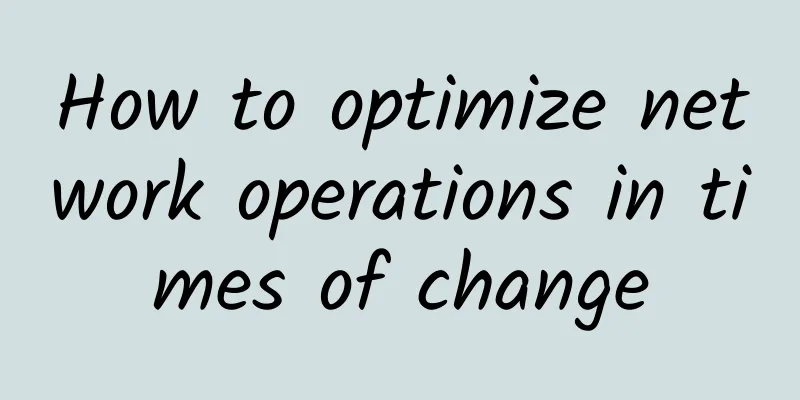How to optimize network operations in times of change

|
As the impact of the coronavirus pandemic has changed many aspects of people's work and life, one area that has changed is the global Internet. As many people work remotely from home during the pandemic, the use of mobile devices has reached an all-time high, data upload and download rates are also increasing, and the number of video conferences has surged.
As many organizations and individuals have changed their internet consumption habits, this has meant that telecom operators have had to adapt quickly to these changes. This has also led to a greater reliance on network performance as many countries and regions rely on digital infrastructure to keep their economies going.
Satellite broadband Each of these technologies will experience user uplink and downlink events such as throughput drops, packet loss and many other key performance indicators, which means each technology needs to be monitored in real time.
Based on these events, telecom operators can detect anomalies faster and are able to notify customers in the area of service degradation. And, by accurately identifying the associated anomalies that caused the event, their technical teams are able to resolve the problem faster than before. |
Recommend
5 must-know SD-WAN security myths
It is undeniable that SD-WAN security is crucial,...
Why do Tencent and Alibaba use LoRa, and operators use NB-loT?
Industry insiders are familiar with LoRa technolo...
The truth about 5G speed, is your 5G package worth it?
[[326825]] We'll cover the different 5G speed...
Let's talk about network programming
Introduction 【1】Network programming: Computers di...
Advantages of IPv6: Faster connections, richer data
The advantages of IPv6 are numerous, including fa...
5G deployment plan postponed to 2021, will operators agree?
In 2020, the sudden outbreak of COVID-19 is havin...
The sequel of Qingyu Year is here! Li Guoqing breaks into Dangdang again to pry open the safe, and netizens comment: Can you post on Weibo while being investigated?
[[332737]] This article is reproduced from Leipho...
TCP waved four times, you are familiar with it! But what about unexpected situations? What about malicious attacks? What about single-end running away?
1. Preface When we talk about the TCP protocol, t...
State management expert: Cookies and Session
1. Introduction Hello everyone, I am Xiao❤, a 985...
BuyVM: 1Gbps unlimited traffic KVM starts at as low as $2/month, 256GB disk starts at only $1.25/month
BuyVM is a foreign hosting company founded in 201...
If the Internet connection becomes slow, you don't need to change the router and restart it to restore it to full health
When you use WiFi at home to surf the Internet, i...
Lisa Host: Los Angeles Cera Data Center CN2 High Defense VPS monthly payment starts at 40 yuan, support 2 yuan/day trial
I shared information about Lisa hosts in the midd...
TCP network stuff! Three-way handshake, four-way handshake, TIME-WAIT, HTTP 2.0 ....
[[419435]] Hello everyone, I am Tom~ Today I will...
Interviewer: What are the ways of communication between components in React?
[[409233]] This article is reprinted from the WeC...
7.2 Our computer room is disconnected from the Internet! What should I do?
1. Background At 10:04 on July 2, 2024, the publi...









